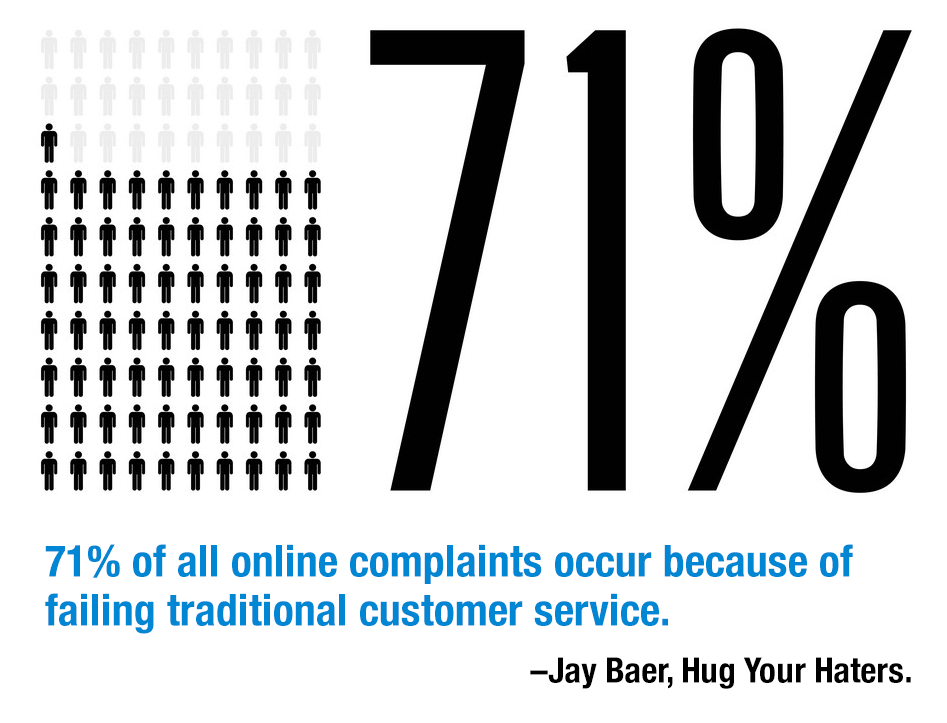
In many ways, homebuyers can easily regress to childhood behaviors. If they don't get an answer (or the answer they want to hear), they go from one parent to the next. Then to a grandparent. An aunt or uncle. They test every possible path to get someone to pay attention to them when they have a concern. They can be very squeaky wheels.
Believe it or not, most buyers don’t complain just to complain. They have legitimate concerns that have been ignored by their builder. They've likely contacted multiple staff members... multiple times... over multiple months. The promise of "partnership" and "being part of the family" just didn't materialize for them. What began as a minor issue grew into full-scale anger, with the buyer shouting from the rooftops of the socials.

The Pathways of Complainers - Onstage or Offstage
The majority of our complainers didn't start out that way. Like most, they were really excited to get the amazing new home we promised them. It's important for us to acknowledge our role in the situation. We need to understand which paths they chose to get their concerns resolved, and why. In his book, Hug Your Haters, Jay Baer advocates that complainers fall into two distinct categories – Offstage Complainers or Onstage Complainers.
Offstage Complainers
These customers start voicing concerns using channels through which they're likely to get a quick response. For example, emails sent to the front-line team, phone calls, the builder's website, warranty portal, responding to surveys, etc.
The ultimate goal of Offstage Complainers: they want their problem resolved.
Onstage Complainers

These disappointed customers often start as offstage complainers, but start airing grievances publicly when they can't get a response or resolution. They've reached out to their salesperson and construction manager. They've escalated their concerns to senior leadership. In fact, they've probably climbed every branch of their homebuilder's org chart for help. When those attempts fail, they take their complaints public.
Any Onstage forum with an audience will do. Facebook, Twitter, Google Reviews, PissedConsumer.com, you name it. Some go the extra mile to create their own websites to vent their anger.
Onstage Complainers choose venues where they are less likely to get a response. They've been ignored so long that they've given up hope for a resolution. So they want to warn everyone else to stay away.
The primary difference between Offstage and Onstage Complainers? Offstage Complainers want a solution. Onstage Complainers want an audience.
What NOT to do when you get a negative review
- DO NOT adopt a victim mentality. Some, if not all, of the negativity could be warranted.
- DO NOT be afraid of engaging with complainers. Eliminating fear will change how you respond.
- DO NOT ignore it and hope it goes away. Not responding is perceived as a response. A response that speaks volumes: "We don't care about you."
What to DO with negative home buyer reviews
- Meet the complainer on the network they've chosen.
- Be prepared. Consolidate the information you have on the customer. Their interactions with your front-line teams, their survey responses, previous or outstanding warranty tickets, other posts, tweets, and reviews.
- Own the criticism humbly. Be human. You don't have to admit fault, but have an empathetic tone. Put yourself in the customer's shoes. Making excuses and defensive posturing make you appear non-customer-friendly.
- The person responding should have the power, authority, and influence to resolve the issue(s). They own the customer and the solution.
- Reply publicly but no more than twice. Then switch channels and take the customer Offstage. Let them know how you can be reached, the best times to connect, schedule a meeting, etc. If they don’t switch channels, they are revealing their true intentions… they want an audience, not answers. And potential prospects will see right through them.
Customer experience expert Jay Bear recommends, "Regardless of who the hater is, I recommend responding publicly. Even if they rant and rave and call you names, you’ll answer coolly and publicly. It probably won’t change the behavior or attitude of that one person, as it’s almost impossible to turn a crazy lemon into lemonade; the fruit is already rotten. But by replying in public you show your temperament, your values, and your belief that all deserve to be heard.” – Jay Baer, Hug Your Haters
The Good news about Bad reviews
Family and friends have more influence than strangers. In the words of Kyle Lacy, speaker, author, and social media expert:
"The impacts of social media and review sites are negligible for luxury purchases (homes, wedding rings, vacations, cars, etc.). People will trust strangers on low-cost consumer goods, small purchases, movies, holiday and birthday gifts. But when people are going to spend a lot of money, shoppers are going to seek the advice of their family and friends. We know this intuitively because it’s what we all do. The higher the investment the higher the need for a trusted source… friends and family."
A study of four high-volume, customer-focused builders reveals that builders have everything at their disposal to minimize the negative impact bad reviews can have. Analyzing the "source of sale" for thousands of closings in 2021 revealed that the most impactful influences on why customers purchased were the 4 R's: Referrals (from family and friends); builder Reputation, Realtors (another facet of reliability, trust, and reputation); and Repeat buyers.
On average, the percent of sales generated from the 4 R's were:
Referral Sales: 30% / Realtor: 30% / Reputation: 20% / Repeat buyers: 5%
Add these up: 30+30+20+5 = 85% and they should be considered Customer Experience Sales. Granted, there is some overlap, but as many as 85% of customers came to their builder because of the homes and customer experience they deliver.
Social Media vs Builder Websites
![]()
In those same surveys, customers were asked about their use of social media and review sites in their home search. Only 30% reported using those online resources, and of that small subset of buyers, only 33% report those sites to be "very important" or "somewhat important." In other words, only one-in-ten customers felt the role of social media added much value to their new home search.
By comparison, more than 80% of customers viewed their builder's website. Almost every single customer has visited your website and half or more have viewed your content repeatedly, as many as 7+ times. When it comes to online content, customers are often paying closer attention to your own builder-controlled content than social sites.
What are your best investments?
- Create a response plan to address any negative online chatter. Consider forming a response team, possibly department heads that can make things happen. You may also want to investigate online listening tools that best fit your needs. Platforms like Mention.net, Hootsuite, Yext and ReviewTrackers have a range of features for various budgets, and typically have free trials.
- Invest in yourself and your customer experience. A robust survey program, like BuilderCX, is at the heart of measuring, monitoring and continually improving your products, processes and people. Our satisfied customers are our best salespeople and storytellers. When they have great stories to tell, we all win!
- Your website. For many prospects, it's the first impression of your brand. A 24/7 model center they'll visit from the comfort of their own home and when it fits their schedule (not your model hours). When beautifully designed and loaded with rich content, high-quality photos and tours, they'll be back time and again.
Understanding the reasoning behind your customer's complaints and channels will help you decide what to do about bad reviews. Whether it's responding in a way that keeps your brand intact or creating more feedback channels for continuous improvement, you should take the complaints seriously. Dismissing or ignoring them will only cause it to snowball. Feedback, including reviews, is a huge opportunity to improve the customer experience. As long as you embrace it.
If you'd like to learn more about using customer feedback to improve your experience, just let us know. We've helped hundreds of builders just like you elevate their customer experience.


